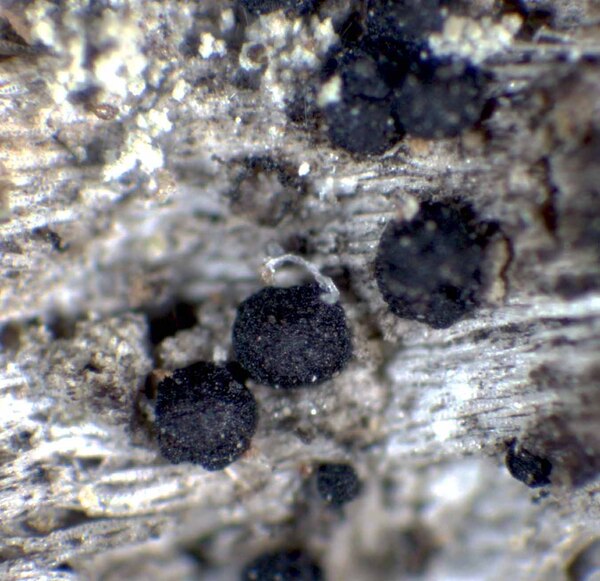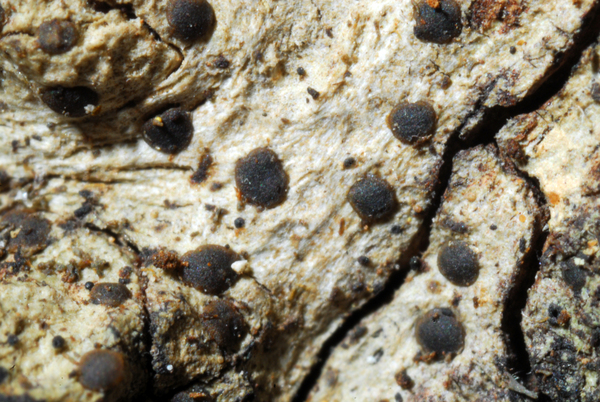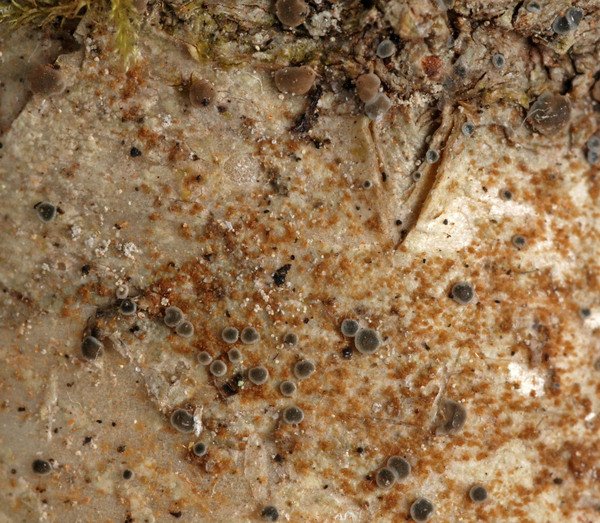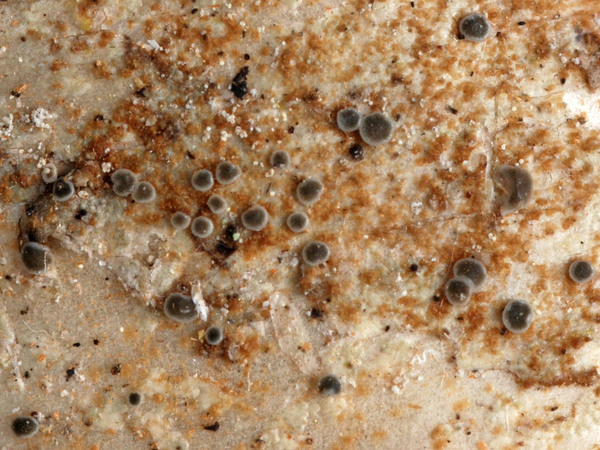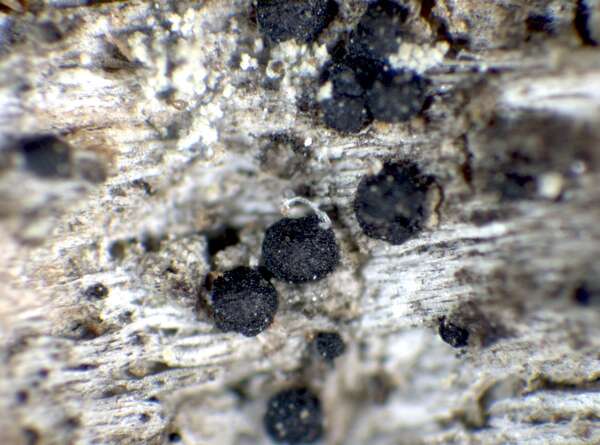Biatora ocelliformis (Nyl.) Arnold
Flora, 53: 476, 1870. Basionym: Lecidea ocelliformis Nyl. - Flora, 48: 145, 1865.
Synonyms: Biatora atroviridis (Arnold) Hellb.; Biatorina subglobulosa (Nyl.) Arnold; Catillaria globulosa var. subglobulosa (Nyl.) Zahlbr.; Catillaria prasina f. ocelliformis (Nyl.) Erichsen; Ivanpisutia ocelliformis (Nyl.) S.Y. Kondr.; Lecidea atroviridis (Arnold) Th. Fr.; Lecidea atroviridis f. ocelliformis (Nyl.) Blomb. & Forssell; Lecidea ocellaris Vain.; Lecidea subglobulosa Nyl.; Lecidella turgidula var. atroviridis Arnold
Distribution: N - TAA (Printzen 1995, Thor & Nascimbene 2007, Nascimbene & al. 2007b, 2022, Nimis & al. 2015), Piem (Isocrono & al. 2004). S - Cal (Puntillo 1996).
Description: Thallus crustose, endosubstratic or very thinly episubstratic, grey to olive green (turning pale brown in the herbarium), continuous to rimose-areolate, the areoles convex, developing on a usually poorly evident dark grey hypothallus, forming up to 4 cm wide patches. Apothecia biatorine, rounded or slightly irregular in outline, sometimes tuberculate, broadly sessile, 0.25-0.6(-0.8) mm across, with a dark grey to blue-black, epruinose, flat to moderately convex disc, and a thin, often paler, finally excluded proper margin. Proper exciple colourless to pale brown in the outer rim, the inner part olive-brown, 30-85 μm wide; epithecium poorly differentiated from the hymenium, sometimes with dark brown patches; hymenium colourless or pigmented as the epithecium, 30-40(-55) µm high; paraphyses simple or sparingly branched in upper part, 1-1.5 µm thick, the apical cells slightly swollen; hypothecium dirty olive, mottled with green-black to dark brown patches, N+ violet, 10-60(-250) µm high. Asci 8-spored, clavate, with a K/I+ blue apical dome penetrated by a narrow, K/I– apical cushion surrounded by a narrow, deeply K/I+ blue zone, the wall K/I- but surrounded by an I+ red-brown, K/I+ blue outer layer, the ocular chamber relatively small, Biatora-type, 26-38 x 7.5-11.5 µm. Ascospores 1-celled (rarely 1-septate), hyaline, narrowly ellipsoid, (7.5-)9.5-14(-20) x (2.5-)3-4(-5.5) µm. Pycnidia very rare, inconspicuous, colourless, pyriform, c. 50 µm across. Conidia 9.5-13 x 0.7-1 µm. Photobiont chlorococcoid. Spot tests: thallus K-, C-, KC-, P+ red. Chemistry: thallus with argopsin; exciple and hypothecium with the Bagliettoana-green pigment.Note: a boreal-montane species found on the bark of mostly young, deciduous and coniferous trees in montane to subalpine forests. It is included in the Italian red list of epiphytic lichens as “Endangered” (Nascimbene & al. 2013c).
Growth form: Crustose
Substrata: bark
Photobiont: green algae other than Trentepohlia
Reproductive strategy: mainly sexual
Commonnes-rarity: (info)
Alpine belt: absent
Subalpine belt: very rare
Oromediterranean belt: absent
Montane belt: very rare
Submediterranean belt: absent
Padanian area: absent
Humid submediterranean belt: absent
Humid mediterranean belt: absent
Dry mediterranean belt: absent

Predictive model
Herbarium samples
Growth form: Crustose
Substrata: bark
Photobiont: green algae other than Trentepohlia
Reproductive strategy: mainly sexual
Commonnes-rarity: (info)
Alpine belt: absent
Subalpine belt: very rare
Oromediterranean belt: absent
Montane belt: very rare
Submediterranean belt: absent
Padanian area: absent
Humid submediterranean belt: absent
Humid mediterranean belt: absent
Dry mediterranean belt: absent

Predictive model
| Herbarium samples |
 Index Fungorum
Index Fungorum
 GBIF
GBIF
